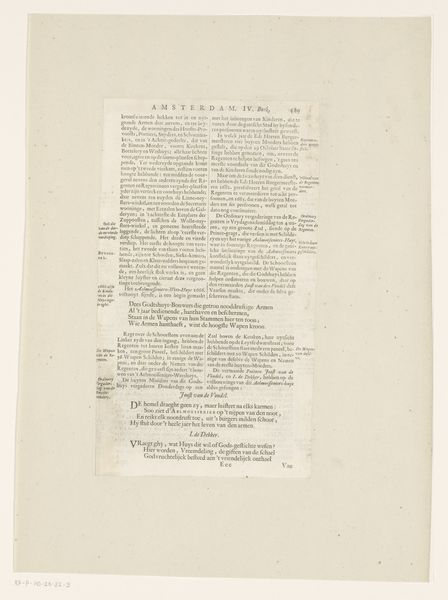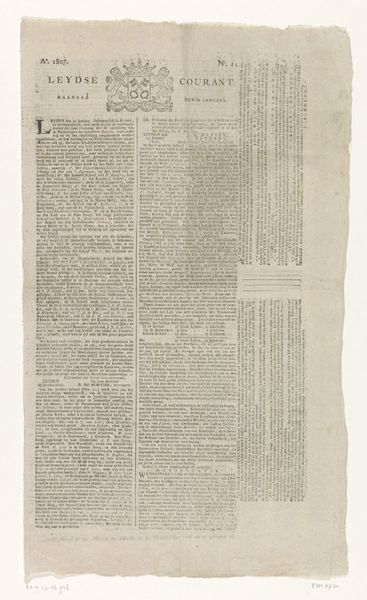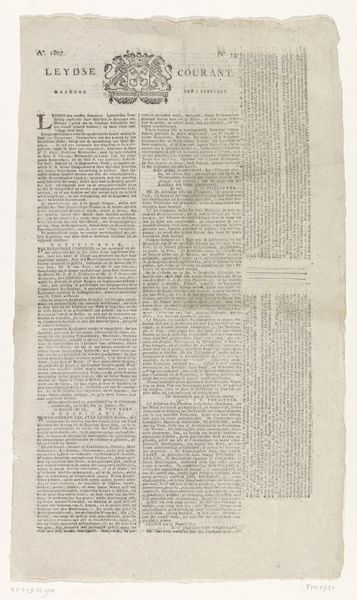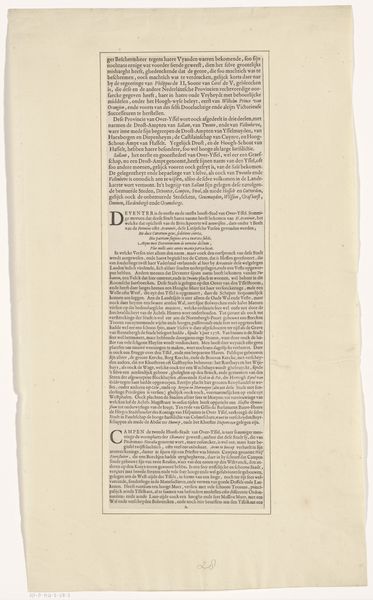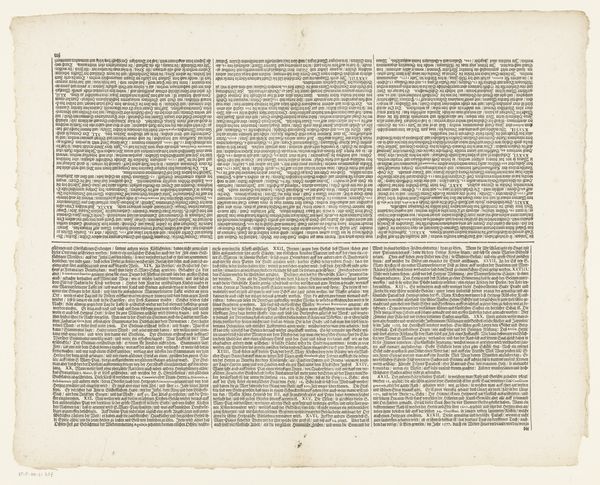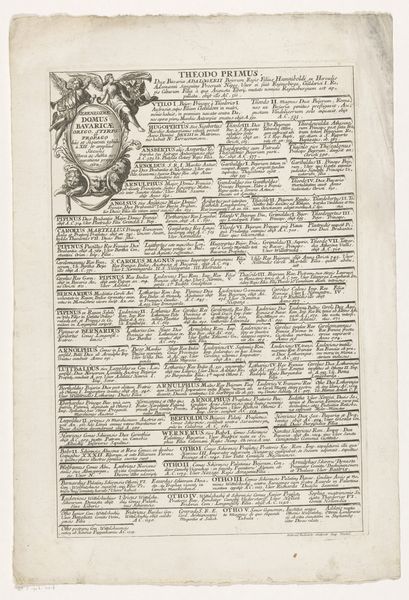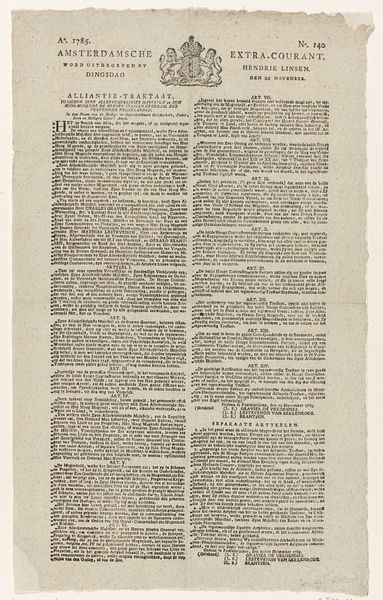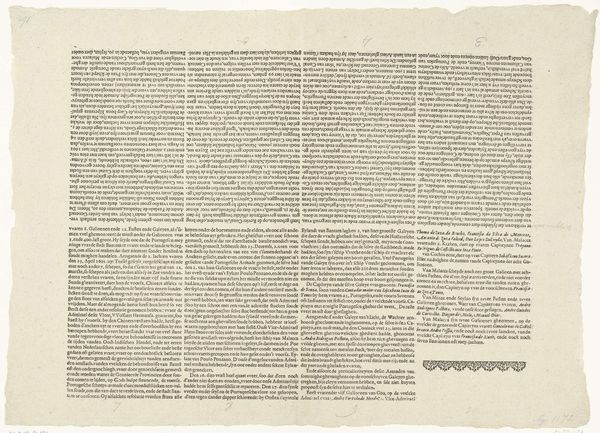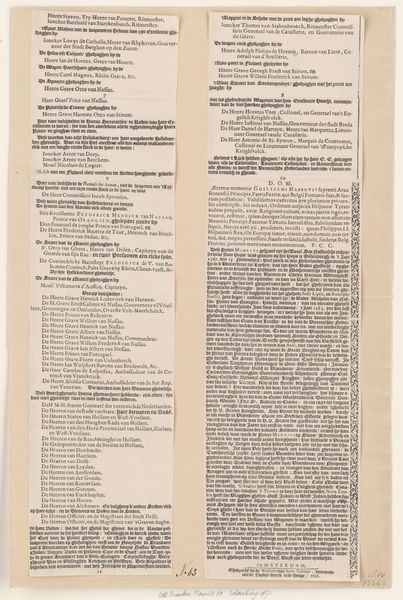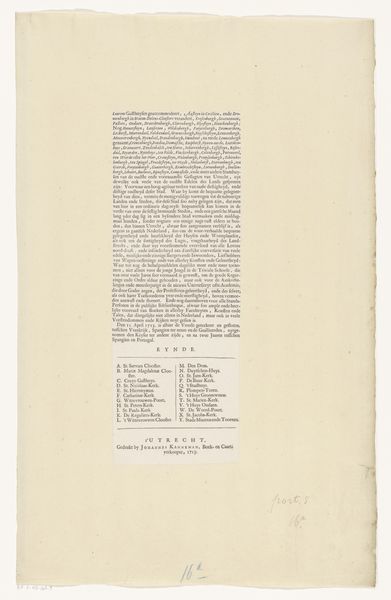
#
aged paper
#
ink paper printed
#
old engraving style
#
hand drawn type
#
personal sketchbook
#
fading type
#
ink colored
#
sketchbook drawing
#
sketchbook art
#
historical font
Dimensions: height 386 mm, width 215 mm
Copyright: Rijks Museum: Open Domain
Editor: So, this is “Deel van een beschrijving van de stad Haarlem in dichtvorm (1/4)" by Samuel Ampzing, made in 1641. It seems to be ink on paper, printed. The dense text gives me the impression of meticulous craftsmanship. What grabs your attention in this piece? Curator: What immediately strikes me is the sheer labor involved. Consider the process: designing and cutting the letters, the physical exertion of the printing press, and the resources – paper, ink, the press itself – that underpinned its production. How did the making of this relate to its consumption, its value in society? Editor: That's interesting! I was just seeing the poem, but now I think about the number of copies someone would have had to print. Curator: Exactly! Think about the materiality of this piece: paper, ink, and the printing press. It becomes more than just words; it represents a system of knowledge production, and that the information was accessible, but only to certain people in Haarlem’s society at the time. Editor: So it's less about the content of the poem, and more about how the poem was made available to people. Curator: Precisely! The paper itself carries information about its time—its manufacture, the availability of raw materials. And the ink! Was it imported? Locally produced? All of these details ground us in the economic and material realities of 17th-century Haarlem. Editor: So analyzing the materials provides insight into the broader social and economic context. That makes me wonder what other messages it’s encoding. Curator: It does. Each element speaks to the means of its creation and its role within that culture's network of production and consumption. Thinking about it from a perspective of materials certainly expands one's perception of the document. Editor: I definitely learned to look beyond just the obvious and to see how deeply connected materials are to the historical moment! Curator: And hopefully, it enriches your perspective by looking at historical documents from multiple perspectives, as objects with a specific context of creation.
Comments
No comments
Be the first to comment and join the conversation on the ultimate creative platform.
